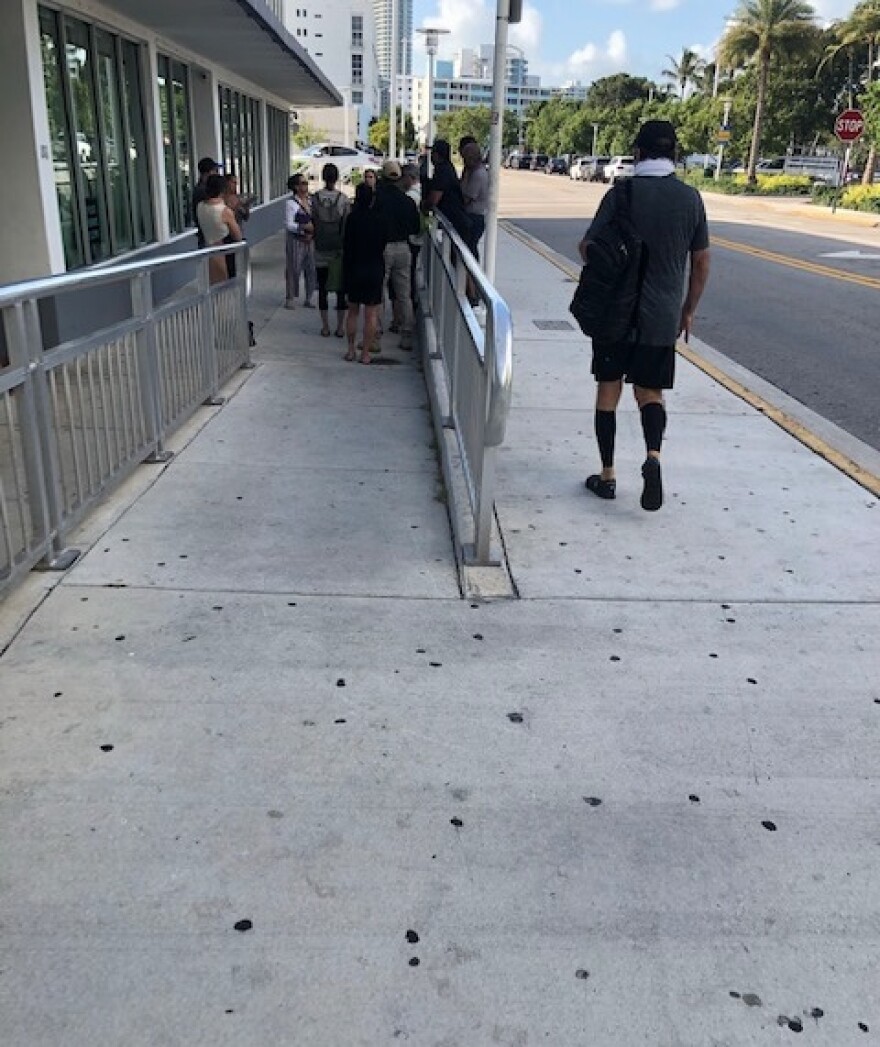A hardy band of UH faculty and state and county officials is just back from a learning trip to U.S. East Coast cities that are wrestling with climate change. This week’s Future Focus conference brought academic, business, and government leaders together to collaborate on climate adaptation.

Visit the Land and Sea Festival Saturday, 10/19/19 for fresh food, and talk with local scientists, surfers, chefs, experts from the department of planning, artists and environmental activists, 9-4 at Queen Emma Square. Free and open to all. The mix of participants is heartening. You'll have scientists, of course, plus Sharon Schneider of Envision Kaimuk?, Dan Dinell of Trees for Honolulu’s Future, Reem Bassous on a panel about Art and mental well being, Aloha Animal Sanctuary will be there, and there's a free yoga class, too.
Check out Hawai'i's climate portal here.
Hawai‘i’s concentration of specialists in various areas of climate change is a resource yet to be exploited, and many scientists are already connected through academic circles. On a recent trip, leaders of key government agencies could assess Honolulu’s possible options first hand.
Makena Coffman is the Director of UH M?noa’s Institute for Sustainability and Resilience. She also Chairs Honolulu’s Climate Change Commission. Dr. Coffman is a planner, and teaches about low carbon cities. Her research interests are energy policy and alternative transportation. Coffman got farsighted members of the Hawai?i Philanthropy Forum to sponsor a Sea Level Rise Learning Tour for local officials to visit cities plagued by water inundation.
“Certainly there was comment, it’s fantastic you have state and county folks together talking about this.”
If you’re worried about flooding in Honolulu, these are the people you’d want to be working on it: Ross Sasamura City’s chief engineer for facilities, Genevieve Sullivan State DOT, Barry Usagawa, Board of Water Supply, they and others journeyed to Miami, Miami Beach, Charleston, and Boston to learn best practices in cities that are already flooding.
“What did we learn that we could adapt or adopt?” asks Chip Fletcher, climate scientist, vice-chair of the Honolulu Climate Change Commission. He was on the trip. Fletcher describes raising roads, raising sidewalks and installing underground pipes that funnel to large pumps behind hedges. They’re doing that at 90 locations in Miami Beach. Pricetag: $650 million.
Fletcher says, “Everywhere we went, Barry Usagawa, who’s from the Board of Water Supply asked, how are you paying for this? One of the things that came up was a storm water management fee which we do not have in Hawai‘i and is very common on the continent.”
For cities like Honolulu with rail bills, or states with unfunded liabilities, Fletcher points to bonds as another funding mechanism. He says the growth of impact investing, which measures returns in terms of community benefits, is a hopeful sign. So far, Hawai‘i’s counties’ bond ratings are good thanks in part to climate preparations underway.
So what’s next? Coffman says Usagawa laid out some general steps.
‘We have a lot of awesome baseline modeling, we can do an assessment of where vulnerable areas are, but what a lot of cities did was they went into a deeper dive to say, let’s do a storm water plan for this area before taking on any specific projects. So I think that’s a concrete next step, along with the education component which is hugely important.”
The Future Focus conference this past week also brought business, banking, and other sectors together on climate adaptation. The insurance industry is already driving changes we can see. New sidewalks in Kaka‘ako are built to more stringent national standards, so they’re higher than the old sidewalks across the street. Fletcher says, in increments, probably over the next decade, the Sand Island Sewage Treatment Plant will be raised 16 feet, a height considered insurable.
“This is also a matter of public education,” says Fletcher.
Luckily that’s where the fun begins. Saturday’s (10/19/19) inaugural Land and Sea Festival is designed for “happiness and resiliency!” the range of participants is cause for hope. Look at the partners: Connections Oceania, Hawai‘i Feast, Honolulu Emergency Management, NOAA, Waik?k? Aquarium, St. Andrews Schools, Hawai‘i Arts Alliance, and more.
Throughout the day, organizers promise music, fresh food, local scientists, surfers, chefs, experts from the department of planning, artists and environmental activists. Free and open to all.




